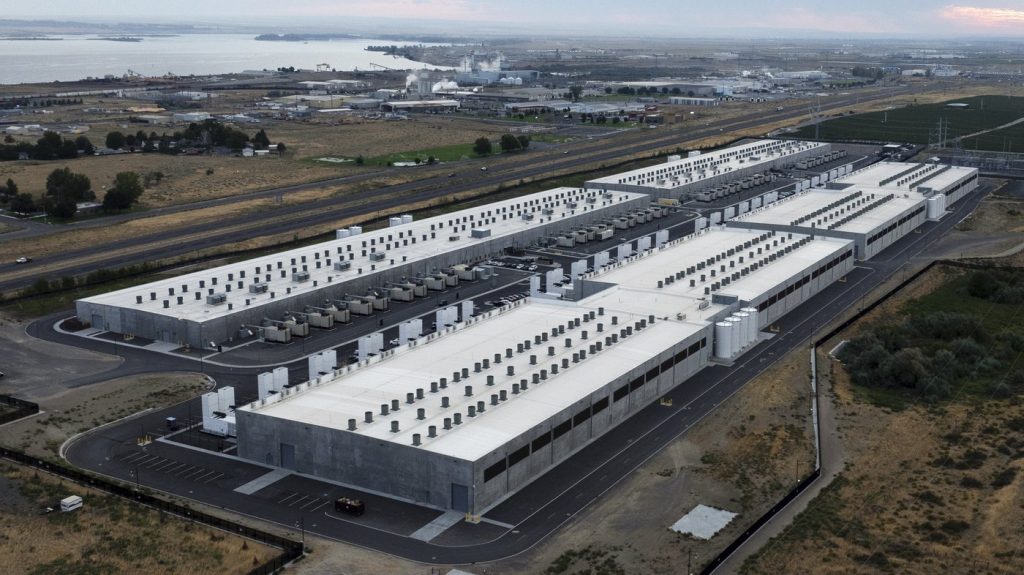As electricity bills continue to rise, states across the U.S. are grappling with how to shield regular household and business ratepayers from the soaring costs associated with powering energy-intensive data centers run by major technology companies like Microsoft, Google, Amazon, and Meta. The challenge lies in the difficulty of pinpointing the exact impact that these data centers have on electricity bills, leading to questions about whether states have the resolve to confront such powerful corporations.
Over a dozen states have initiated various measures to address the rapid expansion of power plants and transmission lines necessitated by the increased demand from data centers. This has included urging the nation’s largest power grid operator to limit price hikes, conducting studies on the impact of data centers on electricity costs, and advocating for data center owners to contribute more significantly to local transmission expenses.
Charlotte Shuff of the Oregon Citizens Utility Board highlighted the growing public concern over rising electricity prices, stating that more residents are voicing their complaints at public utility hearings than ever before. She emphasized the magnitude of the outcry, reflecting widespread dissatisfaction with current energy costs.
Interestingly, some data centers consume more electricity than entire cities, such as Pittsburgh, Cleveland, or New Orleans, prompting policymakers to reconsider a historical pricing structure that distributes transmission costs among consumer classes proportionally based on usage. Ari Peskoe, from Harvard University's Electricity Law Initiative, noted that billions of dollars worth of infrastructure is being developed for just a handful of large customers, fundamentally challenging the assumptions underpinning the existing utility model.
While some officials downplay the influence of data centers on rising electric bills, others argue that evidence suggests these centers are contributing to increased costs that regular consumers are inadvertently covering. Tricia Pridemore from Georgia’s Public Service Commission pointed to the already strained electricity supply and the rising costs of essential infrastructure as contributing factors. However, the Data Center Coalition claims its members are committed to paying their fair share, even as the need for more data centers, particularly to support the artificial intelligence sector, grows.
Recent reports from data and analytics firm Wood Mackenzie indicated that specialized rates for data centers in 16 states may not adequately cover the costs of constructing new natural gas power plants. This suggests that without negotiating higher specialized rates, average residential, commercial, and industrial consumers may end up subsidizing data center energy needs. Additionally, research by Monitoring Analytics, an independent market watchdog, revealed that 70% of last year’s increased electricity costs—amounting to $9.3 billion—was attributable to the demand created by data centers.
In response to these trends, states such as Pennsylvania, New Jersey, Oregon, Texas, and Utah have launched initiatives aimed at ensuring data centers shoulder a greater portion of transmission costs. For instance, Oregon has mandated regulators to establish revised power rates for data centers following significant public concern about rising utility costs. New Jersey’s recent legislation will study if ratepayers are experiencing unreasonable increases in connection to data centers and aims to create specialized rates for these facilities.
Despite some progress, there remain significant doubts regarding states' ability to effectively shield ratepayers from the financial burdens imposed by large-scale data centers. In Indiana, new standards were established to govern data center payments for electricity, yet challenges persist due to a lack of transparency in data center electricity usage. The Environmental and Energy Law Program at Harvard University raised questions about the interests of utilities and regulators in protecting average consumers from the financial impact of catering to large corporate clients.
In Pennsylvania, state officials are working to develop a model rate structure that encourages data center developers to invest substantially in infrastructure upgrades without passing the costs onto ordinary ratepayers. Commission Chairman Stephen DeFrank emphasized the need to avoid placing the financial burden of extensive transmission improvements on the public.










